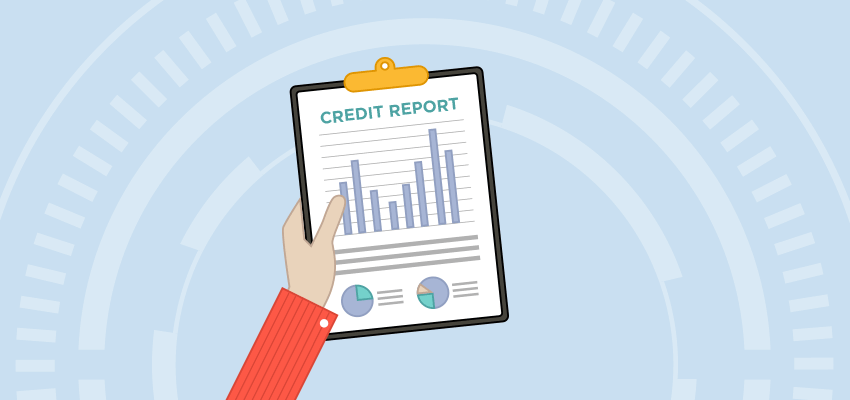Getting Started with Improving a Poor Credit Score
- The best place to start in bring your credit score up into the “good” range, above 670, is to pull your credit reports from each of the three credit bureaus—Equifax, Experian, and TransUnion.
- You can also check your credit by logging into Online Banking through Green Country and clicking on your Credit Score – if you’re not signed up for Credit Sense, sign up today. It’s a great way to keep an eye on your credit.
- Another surefire way to bring your credit score up into the good range is to avoid making payments late.
Credit is an important factor in your financial life, no matter the specifics of your financial goals, your income, or your background. Without good credit, it is challenging to get access to what you need in terms of financing for major purchases. A mortgage may be difficult to obtain, as well as a loan for a new car purchase, a student loan refinance, or a new rewards credit card. Lenders want to know that you have a strong financial track record and a history of responsibly managing your debts over time. Bad credit highlights the opposite, and that creates a cycle of expensive or non-existent financing options in the future.
Before understanding what you can do about bad credit, we first need to take a closer look at what credit means and how it works.
Credit Score Basics
Your credit score is a three-digit number, offering quick insight into your financial past and present. Creditors use this score to make snap judgments on how much of a risk you present as a borrower. Credit scores range from 300 up to 850, and the higher the score, the better chance you have at getting the best and most affordable options for credit in the future. A lower credit score, typically below 670, may indicate you are too high a risk for creditors.

You aren’t assigned a credit score out of thin air, although it may seem that way from time to time. Instead, credit scoring companies like the Fair Isaac Corporation (FICO) and VantageScore use in-depth algorithms to calculate your credit score based on the information provided in your credit report. Your credit report is a repository of sorts for all your credit accounts, from credit cards to student loans. Details about your financial management of these accounts are kept on file and used to determine your credit score.
The factors that influence your credit score include the following:
- Your payment history – 35%
- Credit utilization (debt level) – 30%
- Age of credit history – 15%
- Type of credit accounts – 10%
- Number of credit inquiries – 10%
If you’ve had a strong history of making payments on time, keeping credit card balances to a minimum, and avoiding too many new accounts in a short period, your credit score reflects that as a higher number. However, bad or fair credit, below the 670 mark, may mean you’ve had some blunders in the past. Financial missteps can happen to anyone, but those who are able to improve their credit with the methods below are better off in the long run. Here are several steps you can take to bring your credit score above 670.
Ways to Improve Your Credit Score
A lagging credit score can happen for a handful of reasons, from missed or late payments and high credit card balances to errors and negative entries on your credit report. The best place to start to bring your credit score up into the “good” range, above 670, is to pull your credit reports from each of the three credit bureaus—Equifax, Experian, and TransUnion. Don’t worry; this process is easily done online, for free. Having the details of your credit report can help you determine which of the following strategies you can take, and their potential impact on your credit score in the future.
Fixing Errors
Once you have copies of your credit report, go through them meticulously, searching for mistakes or incorrect information. While the three credit bureaus and the creditors reporting to them aren’t on the warpath to drag down consumer credit scores, sometimes errors take place. That could be something as little as an incorrect past address or employer, to as drastic as an account in collections that isn’t yours. Review your credit report closely to find discrepancies, and then work to dispute them.

The dispute process with each of the credit bureaus is fairly straightforward. Once you have found a mistake, you can provide the information to the credit bureau in writing (this can be done online, also). In your dispute, provide details about which entry is incorrect, why it is incorrect, and any supporting documentation you have to prove it incorrect. While small errors like a wrong address or an incorrect middle initial won’t make a world of difference in your credit score, mistakes on account balance, credit limits, and late payments can have a significant impact.
Avoid Late Payments
Another surefire way to bring your credit score up into the good range is to avoid making payments late. Most creditors do not report your account as late until you have missed a payment for at least 30 days, but not all operate the same. You could be a day late on a credit card or loan and have that account dinged on your credit report. Because payment history makes up the largest portion of the credit score algorithm, having a negative mark on your credit report due to late payment is not good news for your score.
To avoid late payments, consider setting up automatic transfers from your checking or savings account directly to your creditor. Whether the payment amount is for the minimum owed each month or a larger payment, it doesn’t matter as long as the payment arrives on time. If you don’t want to go down the automation path with your monthly payments, consider other strategies for ensuring you are always on time. Set up calendar reminders on your phone or on your computer with your credit account due dates. When the reminder goes off, make that payment immediately. Having several months of on-time payments can help move the needle on your credit score in the right direction.
Bring Credit Utilization Down
The second most significant factor in your credit score calculation is the amount of available credit that you use at any given time. Experts suggest that the ideal threshold be no more than 30% of your credit lines. For example, if you have a credit card with a $2,500 limit, it’s important to have no more than $750 as your unpaid balance at one time. If your credit cards are maxed out or you are pushing the limit each month, your credit score will stay low.

Boosting your credit score by focusing on your credit utilization is a smart move. Come up with a plan of action for your credit card balance(s), such as the debt snowball or the debt avalanche method. With the snowball method, you list out all your credit card balances from smallest to largest, as well as monthly payments, and put your effort toward the one with the smallest balance first. While you pay the minimum balances on the other cards, pay any extra toward the card with the smallest balance to gain momentum. Once that is paid off in full, apply the extra payment toward the next card on the list, and repeat the process.
With the debt avalanche method, you list out your debts based on the highest interest rate first, regardless of the balance owed. Your extra payments go toward the highest-cost card based on the interest rate, while continuing to make minimum payments on the others. This strategy helps save you money over the long run, as reducing interest charges is the focus here. Either the debt snowball or debt avalanche methods can help bring down your credit card utilization percentage to an ideal level, ultimately bringing up your credit score.
As you work toward paying off your credit card balances, you may have an opportunity to ask for a higher credit limit on revolving accounts. This can also help improve your credit utilization ratio, but you’ll only be able to request this once your balances are well under the initial credit limit.
Be Strategic about New Accounts
With a low credit score, it is often challenging to get a new credit account to help you achieve what is known as a good credit mix. Credit scoring algorithms take into account the type of credit you have or have had in the past, essentially giving points for variety. However, you may not have an opportunity to get approved for new accounts if your credit score is below 670. What you are likely able to do, though, is add in credit builder accounts over time that add to your credit mix, and give you a chance to build strong financial habits in the process.
Opening either a secured loan or a secured credit card can be incredibly beneficial in boosting your credit score and improving your credit mix. A secured loan is often a small-dollar loan, between $500 and $5,000, that is secured by an asset, like a savings account or a certificate of deposit. The lender offers you a loan with a fixed repayment term and a set interest rate, and you repay that balance plus interest over the repayment period. These types of loans are easier to get than unsecured loans, and they are reported to the credit bureaus to help strengthen your credit score.
A secured credit card works in a similar fashion, backed by a deposit you pay when opening the account. Limits on secured credit cards are often low to start, from a few to several hundred dollars. However, as you show you can manage the card well by making on-time payments, your credit limit is likely to go up in the future. These cards are easy to qualify for, even with bad credit, and they report to the credit bureaus just like other credit accounts. Either a secured loan or a secured credit card can help bring your credit score up past 670 with a little patience and a commitment to making payments on time.
Get a Co-signer
If you do not have the ability to put down a deposit for a secured loan or credit card, there is another option to help you improve your credit score through a new account. Applying for a loan or a credit card with another person, known as a co-signer, can increase your chances of getting approved for a new account without a deposit required. Having a co-signer is beneficial in adding to your credit mix and potentially increasing your access to available credit, which improves your credit utilization. However, there are a few downsides to consider.

In many cases, a co-signer is a spouse or family member. Should you fail to repay what you borrowed through a loan or charged on a credit card, that person is on the hook just as much as you are. You need to have a plan for paying off your debt before considering a co-signer and have an open and honest discussion with the person in advance. Money can ruin relationships, so be sure to take these steps before asking someone to co-sign on a loan or credit card for you.
Add Missing Accounts
Another way to improve your credit score is to add missing accounts. Not all creditors report to the credit bureaus each month, including companies like property managers for renters, utility companies, wireless providers, or cable companies. While it may seem unnecessary to add these accounts to your credit reports, bringing in a new history of on-time payments may be beneficial for your credit score. Think about the bills you pay each month and reach out to those providers to see if they can and are willing to report to the credit bureaus on your behalf. This is not an option with all companies, but it does not hurt to ask.
Final Thoughts
Overall, bringing your credit score up past the 670 mark takes time and effort. It’s essential to focus on building strong financial habits, such as on-time payments and responsible use of revolving credit accounts first. Implementing other strategies, such as disputing errors, adding other credit accounts, and getting access to new credit can all work to your benefit as well. Getting better credit is a goal anyone can achieve with the right efforts.
This piece of content is not provided or commissioned by any credit reporting agency or financial institution and any opinions expressed in this piece of content have not been approved or otherwise endorsed by any credit reporting agency or financial institution. Our content is for informational purposes only and is not intended as legal, tax or financial advice.